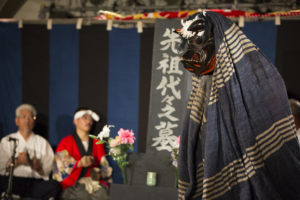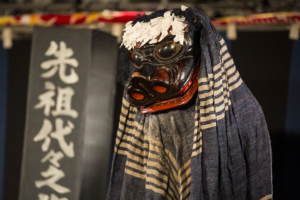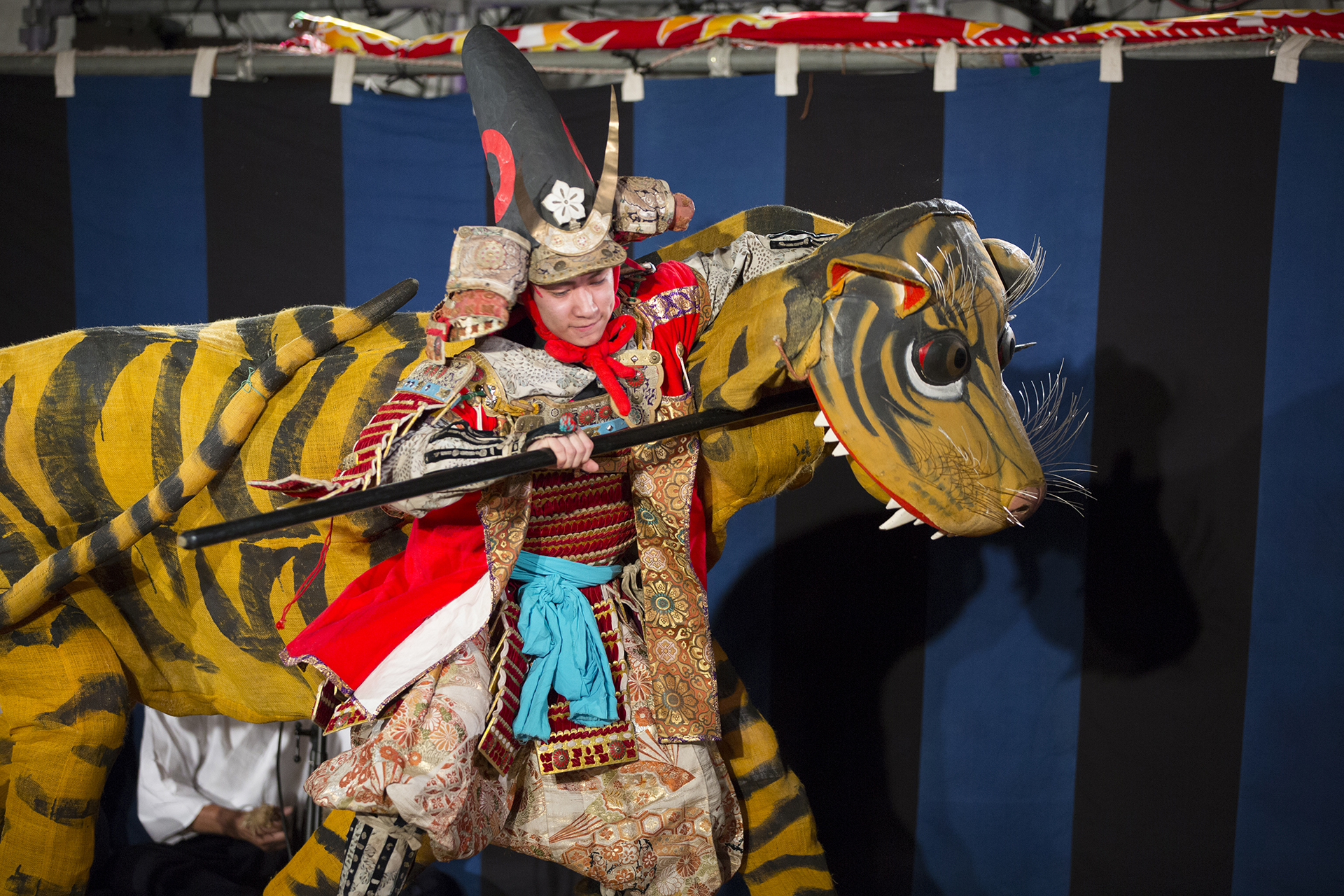鮫神楽連中
さめかぐら
Same Kagura
団体名 : 鮫神楽連中
所在地 : 青森県八戸市 八戸市鮫町字上鮫
種別 : 神楽(三陸国際芸術祭過去出演団体)
三陸国際芸術祭出演 : 2017 大船渡、八戸プログラム 2018 八戸プログラム
鮫神楽は、権現様と呼ばれる獅子頭を奉持し、家内安全や厄払い、豊作豊漁、供養など様々な願いに応じて、儀式的な演目や演劇的な演目などを演じる山伏系神楽の一つです。
獅子頭の銘文から文化13年(1816)頃には既に成立していたと推定されます。嘉永年間(1848~1854)に作られた台本があり、30余りの演目が受け継がれてきました。鮫では早くから山伏の手を離れて、神楽連中と呼ばれる船大工や漁夫などの愛好者が中心となり神楽を伝承してきました。
鮫は八戸藩の藩港として江戸・上方との交流が盛んだったことから、歌舞伎などを神楽風に再構成した組舞が多数残されています。
また毎年お盆に浮木寺の墓地で墓獅子が行われます。これは死者と生者の交流を表現しているといわれ、神仏混交の名残をとどめています。
例年4月の発表会で、指導した子どもたちの神楽を披露しています。演目は四方堂権現舞、墓獅子、三番叟、番楽、鳥舞、山の神、小獅子、壇ノ浦錣引、五條橋千人切、丑若丸鞍馬入、朝鮮国加藤清正虎狩、安宅関勧進帳など多数伝承しています。青森県指定無形民俗文化財。
The Same Kagura is the traditional kagura of Samemachi, Hachinohe. It is one of the kagura that were brought to the Tohoku region by practitioners of shugendo, and is now passed from generation to generation by enthusiasts.
Its repertoire includes yamabushi (mountain hermit) kagura pieces such as the gongenmai, as well as the “Hakajishi,” in which we can see today the amalgamation of Buddhism and Shintoism.
Hachinohe has served in modern times as a trading port that connected the region with Edo (now Tokyo) and the Kansai region. As such, its 12-piece repertoire includes combination dances, such as the “Atakanoseki Kanjincho,” which are entertainment-heavy pieces influenced by kabuki and other arts.
【Movie】


